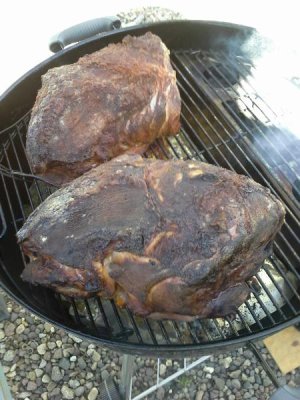G$
is One Chatty Farker
Ok gonna do the pork butt this way, with money muscle on the most indirect side, thanks.
I can already produce very juicy tasty pork butts on my Mini WSM, but I figure it'd be fun to try everything on the kettle, just to say I can do itWho knows I might need to make use of the kettle in an emergency as a backup cooker or to augment a large cook (say for a party).
You might be surprised how much heat radiates right of that "cold side" right on to your money muscle. (or you might not!) Just be careful it is not too close to the edge and lid.





